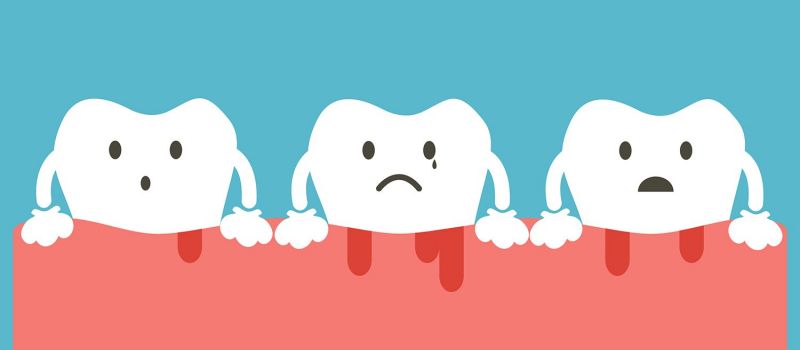Managing gum diseases
By Canada Cloud Pharmacy | Published Wednesday 07 April 2021

The majority of adults in the United States are struggling with gum diseases. Dentists refer to the condition as periodontitis. Gum diseases range from simple inflammation of the gum to more severe conditions such as soft tissue and bone damage to such an extent that you might lose your teeth.
In addition to taking care of your teeth, taking good care of your gums is also important for maintaining healthy gums and preventing or slowing down gum diseases. Almost 70% of Canadians develop gum diseases at some time in their life. Let us discuss how you may take care of your gums and manage gum disease.
What symptoms will you observe if you have gum disease?
Healthy gums appear pink and hold your teeth snuggly. If you have gum disease, you may notice the following changes:
• Swollen gums that appear purple or red.
• Bleeding gums that leave a pink tinge on toothbrush after brushing.
• Tenderness of gums.
• The appearance of blood while you spit after brushing or spotting.
• Pain while chewing.
• Receding gums that make teeth appear longer in size and expose sensitive part of the teeth.
• Loss of teeth.
• Change in the gap between teeth.
Who is at a greater risk of gum disease?
Some people may be more vulnerable to developing gum disease as age increases. The following factors may increase your risk:
• Unhealthy oral habits.
• Smoking tobacco or other addictive substances.
• Hormonal changes especially during menopause or pregnancy.
• Lack of nutrition.
• Being overweight.
• Medications that make the mouth dry.
• Disease conditions such as rheumatoid arthritis, Crohn’s disease, diabetes, cancer or Acquired immunodeficiency syndrome (AIDS).
How will you manage gum disease?
Depending on the severity of your condition, your periodontist or the dentist will perform the following treatment:
• Scaling: As you eat food, a thin sticky layer known as plaque forms on your teeth. Regular brushing, flossing and rinsing may remove it, but it forms again. Sometimes it hardens to form tartar and this becomes the main cause of gum disease. Your dentist may perform "scaling" of your teeth to remove the plaque and the tartar below and above the surface of the gum. This helps in keeping your gums clean.
• Root planning: in this procedure, your dentist will smooth the root surface of your teeth to discourage the build-up of plaque and tartar. The process will also help remove the bacteria causing inflammation of the gum.
• Medication: If you have a gum infection, dentists may prescribe oral antibiotics or topical antibiotics for local application to the gum pocket.
• Surgery: Advanced gum disease requires surgery. The following surgical options are available:
• Flap surgery: This involves incising the gum and recontouring the bone so that the gum tissue is sutured on the bone. This helps easy cleaning of gums.
• Soft tissue graft: A small piece of your mouth tissue is removed and grafted over the damaged soft tissue to cover the roots.
• Bone graft: A small fragment of bone may be placed to serve as a platform to hold the teeth.
• Guided tissue regeneration: Your dentist might regrow the damaged bone.
• Tissue stimulating proteins: Dentists may prescribe protein-containing gels for local application to help healthy regrowth of tissue.
Simple techniques like brushing twice daily with a soft toothbrush and regular flossing can help prevent and manage gum disease. Have a balanced diet rich in vitamins and minerals that are necessary for maintaining good gum health. Visit your dentist regularly for the best advice.



 Canadian Company
Canadian Company 



 Sign In
Sign In
 Home
Home 
 About Us
About Us 
 How to order
How to order 
 Products
Products 



